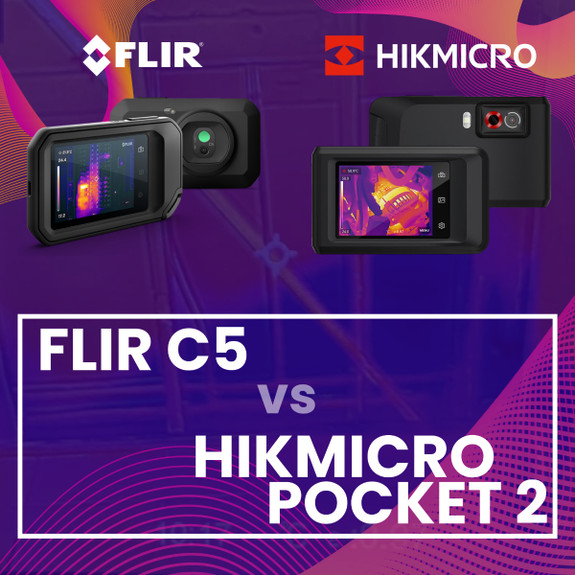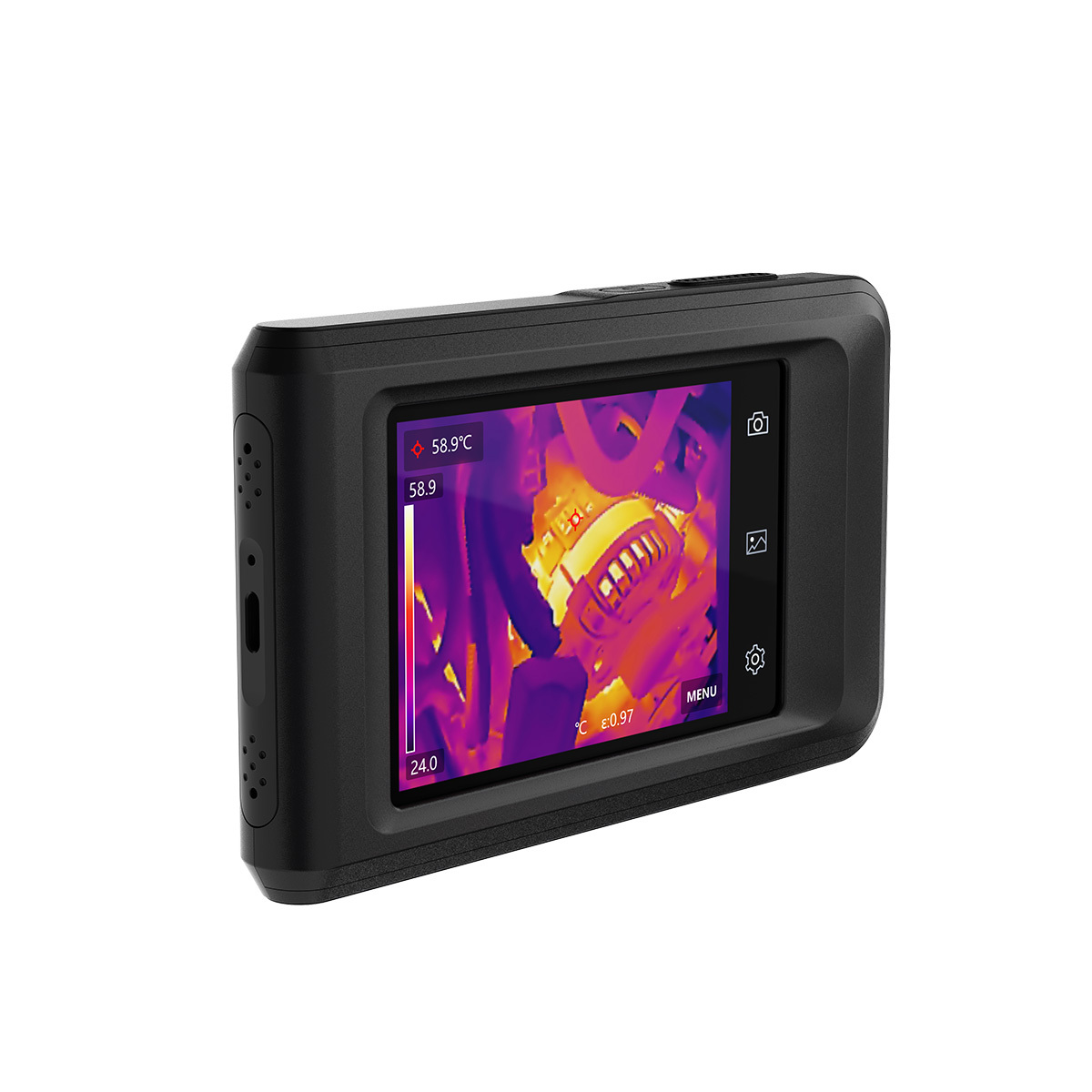FLIR Thermal Imaging Camera Alternative: Hikmicro Pocket 2
Thermal cameras are valuable tools for tasks ranging from building inspections and search and rescue to wildlife observation and electrical maintenance and of course water damage inspections in our industry. When choosing a thermal camera, two popular options are the Hikmicro Pocket 2 and the FLIR C5. Both offer compact designs and functionality for various applications but as we will discover the Hikmicro Pocket 2 offers more than a FLIR thermal imaging camera. Let's delve deeper into their strengths and weaknesses to help you decide which one suits your needs best.
Core Performance: Resolution and Sensitivity
The heart of a thermal camera lies in its ability to detect and visualize temperature variations. Here's where the key differences emerge:
- Resolution: The Hikmicro Pocket 2 boasts a higher resolution of 256 x 192 pixels compared to the FLIR C5's 160 x 120. This translates to sharper and more detailed thermal images. With the Pocket 2, you'll be able to distinguish finer temperature gradients and discern smaller objects. Imagine inspecting a wall for insulation gaps; the Pocket 2 will likely reveal subtle temperature differences more effectively.
- Thermal Sensitivity: Thermal sensitivity refers to the minimum temperature difference a camera can detect. Both cameras offer decent sensitivity, with the Pocket 2 edging out the C5 with a rating of less than 40mK (millikelvin) compared to the C5's less than 70mK. This means the Pocket 2 can pick up on even smaller temperature variations, which can be crucial for applications like detecting overheating electrical components or identifying wildlife in low-light conditions.
Features and Functionality
Beyond core performance, additional features can significantly impact your thermal imaging experience:
- Image and Video Modes: Both cameras offer still image capture and video recording capabilities. This allows you to document your findings for later analysis or reporting purposes.
- Display and User Interface: Both utilize a similar sized LCD screen (around 3 inches) for viewing thermal images. However, user interface details might differ. Flir is known for user-friendly interfaces, while Hikmicro is a relatively new player in the market. Some online reviews suggest the Pocket 2's interface may require some familiarization but there has been no complaints from our customers regarding this aspect.
- Built-in Extras: The Hikmicro Pocket 2 comes equipped with a built-in LED flashlight, which can be helpful for navigating dark environments while using the thermal camera. The Flir C5 lacks this feature, but it offers the ability to take voice notes alongside captured images, potentially aiding in data organization.
- Connectivity and Storage: Data storage is where the approaches differ. The Pocket 2 utilizes a microSD card for image and video storage, offering a readily available and affordable solution. An easy to use app allows direct download to the user phone or tablet on the fly allowing easy integration to reports and e-mails. The Flir C5 integrates with the FLIR Ignite cloud storage system, providing a convenient way to store and access your data remotely. This requires creating an account, and there might be associated subscription fees and an internet connection for uploading.
- Ruggedness: While both cameras boast compact and portable designs, the Flir C5 might have a slight edge in terms of ruggedness. Some user reviews suggest the C5 feels more robust, potentially better suited for harsher environments, however at this point there have been no documented issues for the Hikmicro unit
FLIR Thermal Imaging Camera Brand Reputation and Software Support
FLIR is a well-established brand in the thermal imaging industry, known for its reliable products and comprehensive software support. FLIR offers dedicated software (FLIR Tools+) for image analysis and report generation, which can be valuable for professional applications. Hikmicro is a relative newcomer, and have surprised many with their range, however the Pocket 2 offers impressive core performance with world class leading software tools and responsive product enhancement through free updated firmware providing enhanced capability.
Price and Value Proposition
The Hikmicro Pocket 2 generally comes at a more competitive price point compared to the Flir C5. This, combined with its superior resolution and sensitivity, makes it an attractive option for budget-conscious users who prioritize image quality. If cloud storage is important to you, the Flir C5 might be worth the additional investment.
Choosing the Right Thermal Camera
The ideal thermal camera depends on your specific needs and priorities. Here's a quick breakdown to help you decide:
- Prioritize image quality: Hikmicro Pocket 2 is the clear winner with its higher resolution and sensitivity.
- Need cloud storage and app support: Flir C5 provides a convenient cloud storage solution and integrates with FLIR Tools+ software. Hikmicro offers SD storage and app connectivity.
- Value for money: Hikmicro Pocket 2 offers excellent performance at a competitive price.
- Established brand and software ecosystem: Flir C5 benefits from Flir's reputation and established software tools however Hikmicro appears to match the FLIR thermal imaging camera in this area.
Conclusion
Both the Hikmicro Pocket 2 and the FLIR Thermal Imaging Camera C5 are capable thermal cameras however with the Flir’s main strength cloud storage and debatable increased ruggedness it is hard to go past the Pocket 2 with better raw image quality, better affordability, equally impressive software plus app connectivity, it comes out on top in this comparison for us.
Recent Posts
-
Air Cleaners vs Air Scrubbers: What's the Difference?
As we spend over 90% of our time indoors, the importance of clean air cannot be overstated. From h …6th Jan 2025 -
Why Indoor Air Quality Matters More Than You Think
When we think of air quality, our minds often drift to images of smog-filled cities or pollen-hea …21st Nov 2024 -
The Perfect Moisture Detection Kit
Moisture Detection Tools, Techniques, and Best Practices When faced with a water ingress situati …21st Oct 2024





